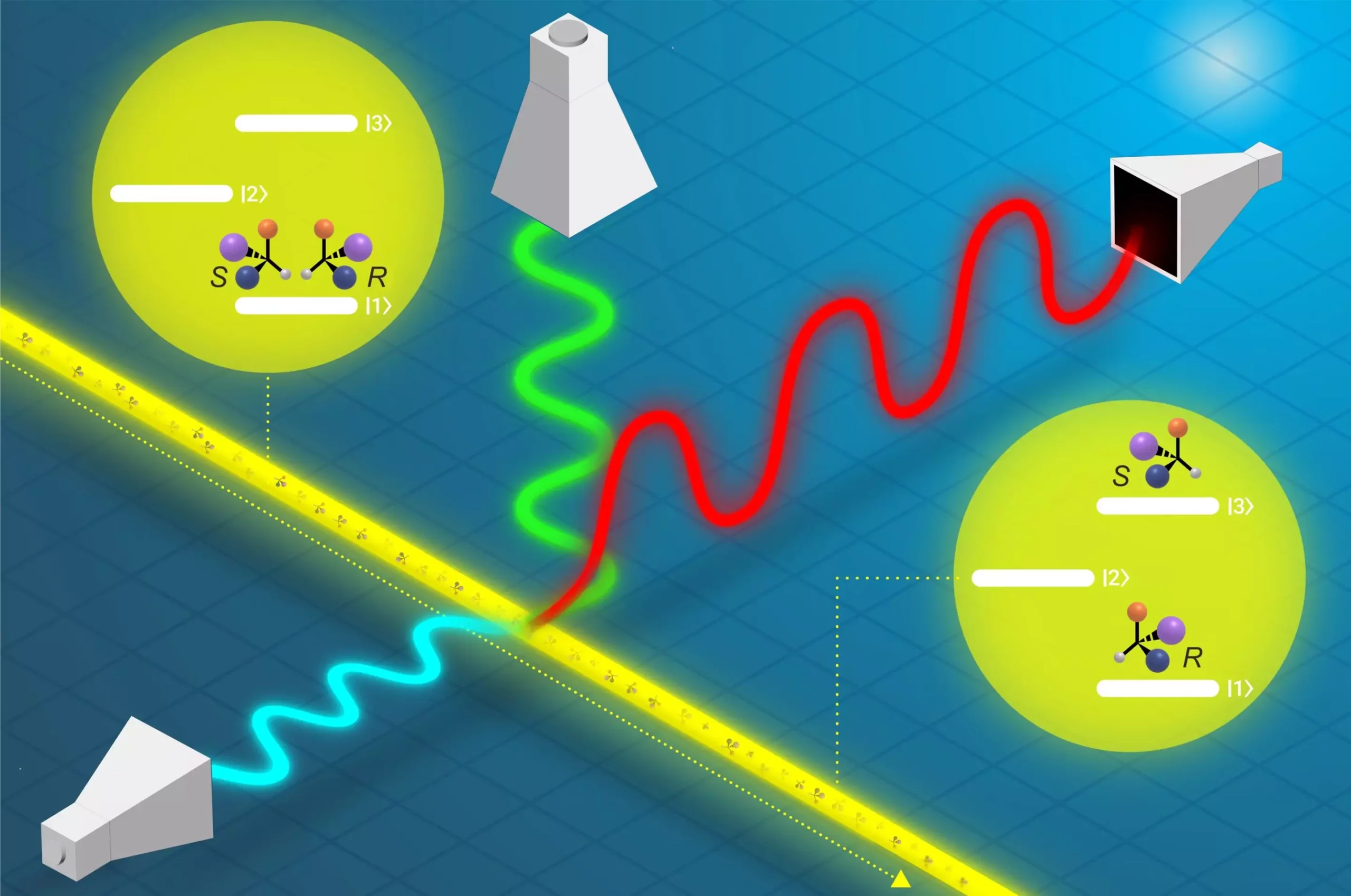A recent study conducted by the Controlled Molecules Group at the Fritz Haber Institute has shaken the foundations of molecular physics. Led by Dr. Sandra Eibenberger-Arias, the team achieved near-complete separation of quantum states in chiral molecules, a remarkable feat that challenges existing beliefs and opens up new avenues for research in this field.
Chiral molecules are essential components of life, existing as two non-superimposable mirror image versions known as enantiomers. These molecules play a crucial role in biological systems, with their spatial orientation determining their properties and interactions. The ability to control chiral molecules at the quantum level has far-reaching implications, from separating enantiomers in the gas phase to exploring the origins of homochirality in living organisms.
The scientific community previously believed that perfect control over the quantum states of chiral molecules was theoretically possible but practically unattainable. However, the team at the Fritz Haber Institute has defied these assumptions by achieving a remarkable 96% purity in the quantum state of one enantiomer, bringing them closer to the elusive goal of 100% selectivity. This breakthrough was made possible through the meticulous design of experimental conditions, involving tailored microwave fields and resonant UV radiation.
In their experiment, the team cooled a beam of molecules to a rotational temperature just above absolute zero and exposed them to controlled UV and microwave radiation in three interaction regions. This resulted in the selective excitation of rotational quantum states in chiral molecules, demonstrating unprecedented control over their behavior. This groundbreaking approach could lead to new insights into the fundamental physics and chemistry of chiral molecules, including the exploration of parity violation predicted by theoretical models.
The successful demonstration of nearly complete, enantiomer-specific state transfer in chiral molecules opens up a wealth of opportunities for further research. By applying this method to a wide range of chiral molecules, scientists can delve deeper into the asymmetries of the universe and uncover new phenomena that have eluded observation thus far. This discovery is expected to drive innovation in molecular physics, inspiring novel research directions and potential applications that could revolutionize the field.
The groundbreaking study conducted by the Controlled Molecules Group at the Fritz Haber Institute represents a significant advancement in the control and manipulation of chiral molecules. By challenging established beliefs and pushing the boundaries of quantum state control, this research has the potential to reshape our understanding of the fundamental processes that govern the behavior of these essential building blocks of life.


Leave a Reply